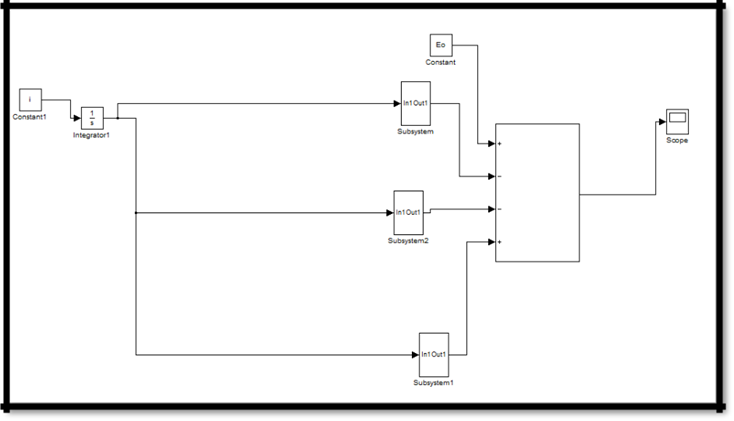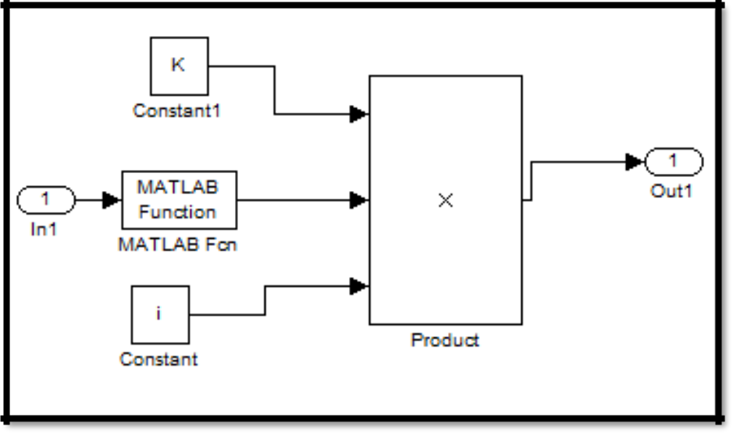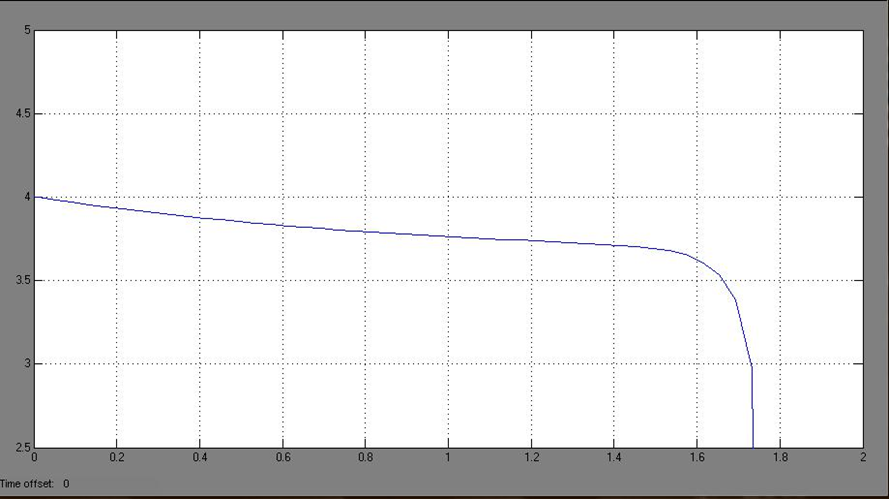Ijraset Journal For Research in Applied Science and Engineering Technology
- Home / Ijraset
- On This Page
- Abstract
- Introduction
- Conclusion
- References
- Copyright
Development of a Non-Linear Battery Management System Model for Lithium-Ion Batteries Using MATLAB Simulation
Authors: Alok Verma, Deepak Kumar Joshi
DOI Link: https://doi.org/10.22214/ijraset.2024.64391
Certificate: View Certificate
Abstract
This research focuses on developing a comprehensive battery model tailored for Battery Management Systems (BMS) using lithium-ion batteries. Given the increasing reliance on lithium-ion batteries in electric vehicles and portable electronic devices, this study aims to construct a non-linear battery model that accurately reflects the charging and discharging characteristics under various load conditions. The research identifies suitable characteristics of lithium-ion batteries essential for effective battery model construction. A MATLAB-Simulink approach is employed to build the model, which integrates both charging and discharging processes into a single simulation framework. This merged model enhances the existing non-linear models by offering improved accuracy in simulating battery behavior under fixed parameters. The outcome is expected to provide a reference model for future studies and applications in power management systems. Additionally, this research underscores the critical role of BMS in extending battery life and ensuring safety, making it a significant contribution to the field of energy management. The study\'s findings highlight the potential of the proposed model to serve as a foundation for further research and development in battery technologies.
Introduction
I. INTRODUCTION
The field of Battery Management Systems (BMS) is generally associated with the current innovation; specifically, it is related to the control system that regulates and keeps track of the rechargeable battery charging process. Modern society's efforts to preserve finite supplies of fossil fuels and lower air pollution emissions are largely attributed to the development of electrically powered automobiles for everyday use. For electric vehicles (EVs) to have propulsion, a battery pack comprising successively charging batteries linked in series and management to keep the batteries charged to maximum capacity are essential (Jose T. Baer et al. 1997). In order to precisely mimic the charging and discharging curves, most battery management systems solely use state of charge (SOC) as a state variable when providing a battery model. The current invention involves a step to improve the accuracy of the curve graph value acquired and to use the same method to integrate the charging and discharging models into a single simulation. In essence, power from the rechargeable batteries is only needed for a few hours. The robot and batteries need to be manually linked to a recharger after the battery's power is exhausted. Therefore, in situations like these, battery management is crucial for controlling the load on the battery or, in the event that the load is uncontrollable, for separating or disconnecting the battery from the load, such as robots. Rechargeable batteries based on lithium were first shown in the 1970s. Lithium batteries are used even more frequently now. It makes technology usable for a wide range of devices, including PDAs, cameras, mobile phones, laptops, and other consumer electronics. However, due to expense and safety concerns, it is rarely used in high power applications outside of certain research and development initiatives.
In electrical cars, batteries are the most used type of electrical energy storage technology. The chemical reactions occurring within a battery determine how well it functions when linked to a source or load. The steady decrease in the battery's energy storage capacity is reflected in the chemical degradation that occurs with time and use. Reducing the battery depreciation process requires conditioning the battery properly, which includes managing its charging and discharging profile under different load scenarios. When a battery is used in a wide range of temperature conditions, its lifespan is often shortened. Despite tales of explosions or failures, batteries are safe when utilized with a power conditioning system that has automatic shutdown. Basically, two factors are taken into account in order to improve battery performance. First is the battery's actual capacity, which is determined by the materials used in its construction and manufacturing method. The Battery Management System (BMS) comes in second (K.W.E. Cheng et al. 2011). One group of rechargeable batteries is the lithium-ion battery family.
It is among the most widely used kind of rechargeable batteries for electric cars and portable electronics. Comparing lithium batteries to lead-acid and nickel metal hydride batteries, lithium is the preferred option due to its superior energy density, longer cycling life, and better power density. When not in use, lithium batteries also have minimal self-discharge and no memory effect. These features have increased awareness of lithium-ion batteries among the general public. The findings from Li Siguang et al.'s 2009 comparison of the properties and features of lithium-ion batteries with those of two other battery types are shown in Table 1. As a result, lithium-ion batteries have better specifications than nickel metal hydride and lead-acid batteries.
Table 1: Comparison parameters of different type of battery
|
|
Category of |
Energy density |
Power density |
Cycle life |
Cost ($) |
|
|
|
battery |
(Wh/kg) |
(W/kg) |
(time) |
|
|
|
|
|
|
||||
|
|
|
|
|
|
|
|
|
|
Lead-acid |
30~50 |
200~400` |
400~600 |
120~150 |
|
|
|
|
|
|
|
|
|
|
|
NiMH |
50~70 |
150~300 |
>800 |
150~200 |
|
|
|
|
|
|
|
|
|
|
|
Lithium |
120~140 |
250~450 |
1200 |
150~180 |
|
|
|
|
|
|
|
|
|
The Battery Management System has emerged as a key element due to the growing interest in electronic devices and electric cars. For electric cars and other electronic gadgets, battery monitoring is essential since the battery management system determines the battery's lifespan, functionality, and safety. All aspects of battery pack and control system monitoring, control, balancing, and safety circuits are managed by Battery Management Systems (BMS). Battery management systems efficiently control charging and discharging of batteries, balance voltages across cells to maintain a steady pack voltage, and monitor cell voltages. In addition, the Battery Management System's ability to safeguard series cell packs from overvoltage and overcurrent situations is another crucial characteristic. In addition, it manages power conservation, keeps an eye on system temperatures, and communicates with external controllers to send feedback to the system (Grant Gothing et al. USA). During the charging phase, the negative active material is reduced and consumes electrons, while the positive active material is oxidized and produces electrons. These electrons make up the flow of current in the external circuit. The electrolyte in lithium ion cells may act as a straightforward buffer to control the passage of ions between the electrodes internally. Rechargeable batteries are charged by an AC mains battery charger, while some are designed to work with a 12-volt DC power outlet found in cars. A battery might take anywhere from a few minutes to several hours to fully charge. A full charge will take at least 14 hours, however slow chargers that aren't equipped with temperature or voltage sensors would only charge slowly. Depending on the type, rapid chargers may normally charge cells in two to five hours, with the fastest models taking as little as fifteen minutes. Before dangerous overcharging or overheating by the fast chargers happens, there are several techniques to detect when a cell gets full charge (change in terminal voltage, temperature, etc.). In order to prevent the cells from overheating, the quickest chargers frequently have cooling fans. The cell is composed of five regions: a porous composite negative insertion electrode, a porous separator, a porous composite insertion electrode, and an aluminum positive electrode current collector. The copper negative electrode current collector is the first region. To create composite electrodes, the active material particles are bound together by a binder and an appropriate filler material, like carbon black.
II. OBJECTIVE OF THE PRESENT WORK
The main objectives of this research project are to determine an appropriate battery model for use in a Battery Management System (BMS) and to develop a comprehensive block diagram model for a Lithium-Ion battery using Matlab Simulation. The research will focus on identifying the suitable characteristics of Lithium-Ion batteries that are essential for constructing an effective battery model. Additionally, a Battery Management System model will be created through Matlab-Simulation, aiming to enhance the existing non-linear battery model by developing a combined model that effectively studies both the charging and discharging characteristics of a Lithium-Ion battery under fixed parameters.
In this research, the emphasis will be on constructing a non-linear battery model by closely analyzing the charging and discharging properties of the battery.
Previous studies have indicated that the properties of a battery change when it is charged and discharged, particularly in the presence of a load. Therefore, constructing a basic battery model will provide a valuable reference point for researchers. Moreover, the resulting model can serve as a reference for future researchers who wish to conduct tests on different battery parameters. Additionally, the field of battery management systems is of significant interest due to its potential for improving power management, making this research highly relevant.
III. MATERIALS AND METHODS
The primary characteristic of lithium-ion batteries will be the main area of study that has to be done. It is necessary to identify all of the lithium battery's key characteristics and understand the factors that set it apart from other batteries. Further investigation is required regarding the modeling of battery management systems. According to O. Tremblay et al. (2007), there are primarily three kinds of battery models: experimental, electrochemical, and electric circuit based. It is not advised to use experimental or electrochemical models to simulate cell dynamics in order to determine the battery's state of charge (SOC). It is advised to utilize models based on electric circuits since they might be helpful in representing the electrical characteristics of batteries. The final output of this project would be the computing software's modeling of the battery management system. To convert the calculating process into simulink-blocks, software is required. The program of choice is MATLAB-Simulink for calculation.Mathworks produced this program. A commercial tool for modeling, simulating, and analyzing dynamic systems with several domains is this software. Block libraries that can be customized and a graphical block diagramming tool serve as its main interfaces. Digital signal processing, control theory, multi-domain simulation, and model-based design all make extensive use of Simulink. The workflow of the present work is shown in Figure 1.

Figure 1. Workflow employed in the present work
IV. RESULTS AND DISCUSSION
Prior to beginning the modeling process, a few system requirements must be finalized before being included in the model. The specified parameters are listed below in Table 2.
Table 2 : Battery parameters (Discharge)
|
Parameters |
EO(V) |
R(ohm) |
K(V) |
A(V) |
B (Ah)-1 |
|
Type |
|
|
|
|
|
|
|
|
|
|
|
|
|
Lithium-Ion |
3.7348 |
0.09 |
0.00876 |
0.468 |
3.5294 |
|
Battery |
|
|
|
|
|
|
|
|
|
|
|
|
Prior to usage, it is always expected that the battery would be fully charged during the charging procedure. Typically, no load is connected to the battery throughout the charging process. Only a direct connection to the charging system will be made. As a result, there won't be any voltage losses throughout the charging phase as a result of internal resistance, capacity fading, or temperature. Every battery, though, has a specific lifespan. The battery's internal losses are determined by the chemical composition of the battery. The lifespan of the battery decreases with increasing frequency of charging and discharging. This is because research shows that, each time the battery being charged, the life span of the battery will reduce by one cycle. Besides that, if the battery being charged while the load is being connected, the battery will not reach its maximum capability of charges (less than 100% of charges) , due to some voltage of will be donated to the load.

Figure 2. Simulation Block Diagram of the Main System (Charging)

Figure 3. Simulation Block Diagram of the Subsystem 1

Figure 4. Simulation Block of the Subsystem 2

Figure 5. Simulation Block Diagram of the Subsystem 3
The outcome of the lithium ion battery discharge simulation is displayed in Figure 6. At 4.2V, the battery begins to discharge, and it takes 1.7 hours to finish. A current rate of 0.9A is delivered to the model. The battery rapidly drains until it reaches 3.8V at t=0.2Ah. After that, the battery discharges at a steady 3.6V from t=0.4Ah to t=1.4Ah. The battery's voltage will eventually fall below its initial value if it is repeatedly discharged. In contrast, Figures 7, 8, and 9 display the discharge simulation curve's result after the model has been discharged while a load is present. Figure 7 shows how the battery discharges at 4.0V and how long it takes to finish at t=1.9Ah. The battery is being connected to a 0.94 ohm load with a 0.95 A current value. When t=0.3Ah occurs, the battery discharges quickly. The battery discharges at 3.5V at a consistent rate from t=0.5Ah to t=1.5Ah. The battery continuously drains and drops below its voltage level after the 1.5Ah time rate.

Figure 6. Discharge Curve with SOC initial 0.89 (10 cycle time) & current value 0.9A

Figure 7. Discharge Curve with SOC initial 0.89 (10 cycle time) with load 0.94 ohm

Figure 8. Discharge Curve with SOC initial 0.89 (10 cycle time) with load 1.04 ohm
Conclusion
The goals established have been met thus far by the investigation and research conducted. First, the right battery has been determined for both electric vehicles and handheld devices. In comparison to lead-acid and nickel metal hydride batteries, lithium-ion batteries are superior due to their high energy density, lack of memory effect, extended cycling life, and gradual discharge of charge during non-use. The choice of the proper battery model would come next. State of charge (SOC) is the only state variable used by the non-linear battery model, which was selected. This mode was chosen in order to precisely replicate the charging and discharging curve using the identified assumptions. The charging and discharging equation is calculated using the selected model as the foundation for this project. Using the computation program MATLAB-Simulink, the calculation technique will next be translated into block diagrams once it has been recognized. The model build was soon put to the test by connecting it to a variety of loads to simulate charging and discharging.
References
[1] Grant Gothing, Bloomy Controls, USA. (n.d.). Functional Testing of Vehicle Battery Management Systems (BMS) using a PXI Platform . [2] http://en.wikipedia.org/wiki/Lithium-ion_battery. (n.d.). [3] Li, X., Xu, L., Hua, J., Lin, X., Li, J., & Ouyang, M. (2009). Power management strategy for vehicular-applies hyrid fuel. Journal of Power Sources , 542-549. [4] Baer, J. T., Davis, B. C., & Blanyer, R. J. (1997). Battery Management System, [5] Chen, M., & Rincon-Mora, G. A. (2006). Accurate electrical battery model capable of predicting runtime and IV performance. Energy Conversion, IEEE Transactions on, 21(2), 504-511. [6] Cheng, K., Divakar, B., Wu, H., Ding, K., & Ho, H. F. (2011). Battery-management system (BMS) and SOC development for electrical vehicles. Vehicular Technology, IEEE Transactions on, 60(1), 76-88. [7] Crompton, T. R. (2000). Battery reference book Newnes. [8] Dürr, M., Cruden, A., Gair, S., & McDonald, J. (2006). Dynamic model of a lead acid battery for use in a domestic fuel cell system. Journal of Power Sources, 161(2), 1400-1411. [9] Erdinc, O., Vural, B., & Uzunoglu, M. (2009). A dynamic lithium-ion battery model considering the effects of temperature and capacity fading. Clean Electrical Power, 2009 International Conference on, 383-386. [10] Karden, E., Ploumen, S., Fricke, B., Miller, T., & Snyder, K. (2007). Energy storage devices for future hybrid electric vehicles. Journal of Power Sources, 168(1), 2-11.49 [11] Kuhn, E., Forgez, C., Lagonotte, P., & Friedrich, G. (2006). Modelling ni-MH battery using cauer and foster structures. Journal of Power Sources, 158(2), 1490-1497. [12] Mauracher, P., & Karden, E. (1997). Dynamic modelling of lead/acid batteries using impedance spectroscopy for parameter identification. Journal of Power Sources, 67(1-2), 69-84. [13] Plett, G. L. (2004). Extended kalman filtering for battery management systems of LiPB-based HEV battery packs: Part 3. state and parameter estimation. Journal of Power Sources, 134(2), 277-292. [14] Ramadass, P., Haran, B., White, R., & Popov, B. N. (2003). Mathematical modeling of the capacity fade of li-ion cells. Journal of Power Sources, 123(2), 230-240. [15] Shepherd, C. M. (1965). Design of primary and secondary cells. Journal of the Electrochemical Society, 112, 252. [16] Siguang, L., & Chengning, Z. (2009). Study on battery management system and lithium-ion battery. Computer and Automation Engineering, 2009. ICCAE\'09. International Conference on, 218-222. [17] Spotnitz, R. (2003). Simulation of capacity fade in lithium-ion batteries. [18] Xu, D., Wang, L., & Yang, J. (2010). Research on li-ion battery management system. Electrical and Control Engineering (ICECE), 2010 International Conference on, 4106-4109. [19] Charles J Scuilla (2007) Research on the Commercialization of LithiumBattery, Scuilla Paper, 16,1-16,950 [20] Tremblay, O.; Dessaint, L.-A.; Dekkiche, A.-I. A Generic Battery Model for the Dynamic Simulation of Hybrid Electric Vehicles Vehicle Power ,Propulsion Conference, 2007. VPPC 2007. IEEE Publication Year: 2007 ,Page(s): 284 - 28
Copyright
Copyright © 2024 Alok Verma, Deepak Kumar Joshi. This is an open access article distributed under the Creative Commons Attribution License, which permits unrestricted use, distribution, and reproduction in any medium, provided the original work is properly cited.

Download Paper
Paper Id : IJRASET64391
Publish Date : 2024-09-29
ISSN : 2321-9653
Publisher Name : IJRASET
DOI Link : Click Here
 Submit Paper Online
Submit Paper Online

